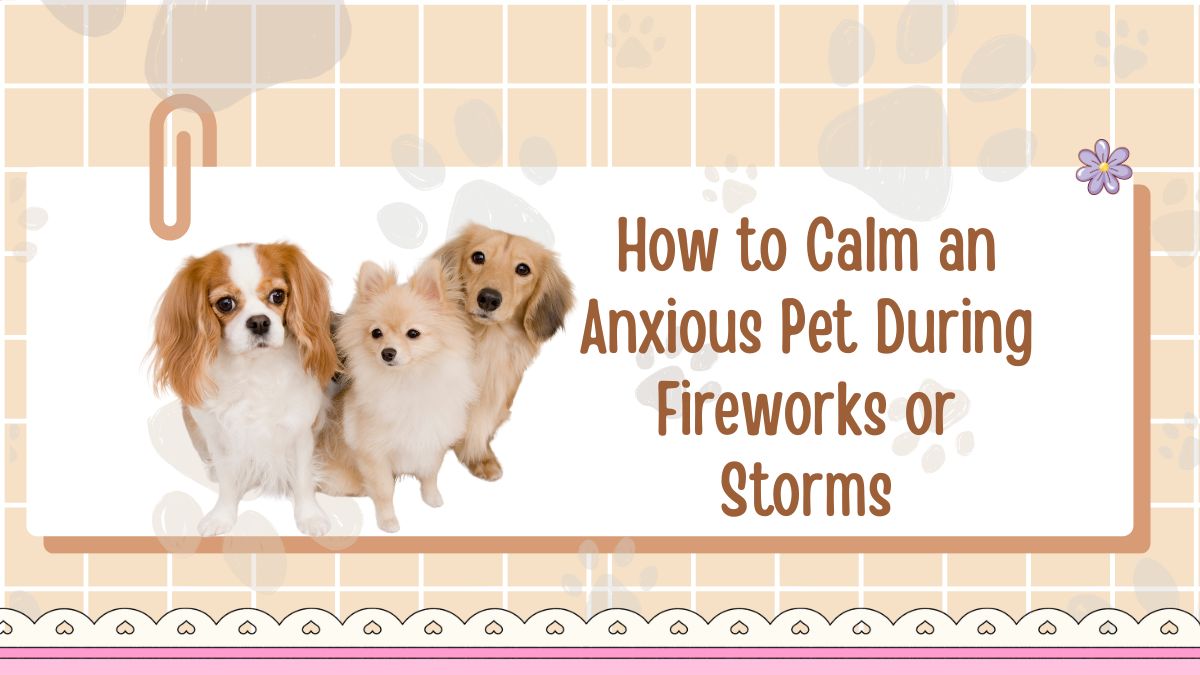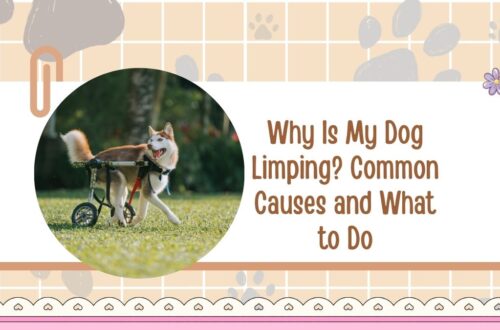When the skies boom with thunder or bursts of fireworks light up the night, our pets often feel anything but festive. For many dogs and cats, these loud noises, flashing lights and changing atmospheric conditions trigger deep anxiety.
As a pet owner, you may notice your companion trembling, hiding, panting, pacing, or even fleeing. The good news: according to recent veterinary guidance, you can help your pet get through these events more comfortably by preparing, creating the right environment and using behavioural tools.
In this article we’ll walk you through detailed, up-to-date information on how to calm your pet during fireworks or storms, with facts, figures, step-by-step methods, and a handy table you can refer to.
Why Pets Become Anxious During Fireworks & Storms
Pets, especially dogs and cats, have much more sensitive hearing and senses than humans. A sudden crack of thunder or the pop of a firework can seem to them like a threat.
The main triggers include:
- Loud unpredictable noises (fireworks, thunder)
- Flashing lights or bursts of illumination
- Changes in barometric pressure, static electricity or air movement during storms
- Vibrations or reverberations through windows and walls
- Past negative experiences leading to noise phobia (in dogs especially)
When a pet experiences such terrifying stimuli, the outcome can be destructive behaviour, escape attempts, trembling, drooling, urinary/defecation accidents, and in severe cases health complications.
Key Information for Calming an Anxious Pet
| Step | Strategy | What to do | Why it matters |
|---|---|---|---|
| 1 | Safe Space Creation | Choose a quiet interior room (windowless if possible), with familiar bedding, toys, water. Close windows/blinds. | Provides refuge from noise, light and visual disturbances. |
| 2 | Sound & Light Reduction | Play calming music or white noise; draw curtains; muffle sound. | Masks external noises and reduces visual flashes that trigger panic. |
| 3 | Use of Calming Aids | Consider pressure wraps (anxiety vests), pheromone diffusers/sprays, vet-recommended supplements. | These aids help lower stress responses physiologically and psychologically. |
| 4 | Exercise & Distraction Pre-Event | Give your pet extra play or walk time before the event; provide interactive toys inside. | A tired pet is less reactive; distractions redirect focus away from stimuli. |
| 5 | Desensitisation & Counter-conditioning | In calm times, play recordings of fireworks/thunder at low volume and pair with treats or comfort; gradually increase exposure. | Re-wires the pet’s emotional association from fear to neutral or positive. |
| 6 | Veterinary Consultation for Severe Anxiety | If standard measures fail, talk to a vet about anti-anxiety medication or behaviour therapy. | Some pets have profound phobias requiring professional intervention. |
| 7 | Safety & Identification Check | Ensure microchips, tags are up-to-date; secure doors, windows, fences; keep pet indoors during events. | Many pets escape during noise events; prevention and identification are critical. |
Step-by-Step: Preparing for Fireworks or a Storm
1. Weeks or Days Before the Event
Begin environmental preparation well ahead of any forecasted storm or scheduled fireworks. Pick a quiet room or crate area and let your pet explore it during calm times. Fill it with bedding, a familiar item, their favourite toy or chew. Encourage them to spend short periods there so it becomes a safe “go-to” place. (See Safe Space in table)
2. On the Day / When Noise Events Occur
- As soon as you anticipate noise (e.g., fireworks start or a storm builds), move your pet into the safe space.
- Close windows, draw blinds or curtains, turn on the TV/fan/white noise.
- Provide a chew, puzzle toy or treat to occupy them.
- Stay calm yourself. Pets pick up on your energy. If you are relaxed, your pet may also be more settled.
- Avoid punishing or scolding fearful behaviour. That only reinforces the idea there is something to fear.
- Avoid excessive fussing. Over-comforting may signal to your pet that there is a real threat—encouraging more anxiety in future.
3. After the Event
- Once the noise has passed, allow your pet to come out when they’re ready.
- Offer calm, neutral attention rather than big celebrations. Encourage restful behaviour.
- Note any heightened anxiety or behavioural change and consider further training or vet input if needed.
- If your pet reacted badly (trying to escape, destructive behaviour, trauma response), consider seeking professional support.
Tools & Aids That Can Help
Below are some of the most effective tools, with current vet guidance:
- Anxiety wraps / Pressure vests: These provide gentle, constant pressure around the torso and mimic a swaddling effect. Effective for many pets.
- Pheromone diffusers/sprays: Use synthetic versions of calming pheromones that pets produce naturally when they feel safe. These have shown benefit for noise phobia.
- Calming sound environments: White noise machines, fans, or soft classical music can reduce impact of thunder or fireworks.
- Desensitisation recordings: Using carefully controlled audio recordings of fireworks or storms during calm times, then pairing with positive rewards.
- Vet-approved medication or supplements: For pets with severe phobias, a veterinarian may prescribe medications or controlled supplements. These must be given before the event to be effective.
What to Avoid
- Don’t punish pets for fearful behaviour. That increases stress and makes the fear condition worse
- Don’t wait until the noise starts to begin calming measures or introducing new items. Many tools must be used before the event to be effective.
- Don’t rely solely on “natural” remedies or over-the-counter supplements without vet supervision. Efficacy may vary and safety is not always assured.
- Don’t leave your pet unattended outside or unsecured during fireworks or storms — they may panic and escape.
Loud storms and fireworks pose one of the most common fear-inducing experiences for our dogs and cats—but they don’t have to suffer through these events unprepared.
By creating a secure environment, using tried-and-true behavioural tools like desensitisation, pheromone and pressure aids, giving extra exercise beforehand, and staying calm and consistent yourself, you significantly increase your pet’s chances of staying calm and comfortable.
And when anxiety is more profound, timely veterinary intervention makes all the difference. With preparation, patience and love, you and your pet can face the skies together—and come through calmer, safer and stronger.
FAQs
Desensitisation can significantly reduce fear responses, but not every pet will be completely unbothered. Some animals—with strong phobias—may always have some level of sensitivity, and long-term behaviour modification or medication may be needed.
If your pet shows extreme reactions such as attempting to escape, injuring themselves, having accidents in the house, panting/trembling excessively during noise events, then it’s wise to seek veterinary advice ahead of the next event.
Hiding can be a normal coping strategy. Provide a safe space for them and supportive environment (quiet room, masking sound). If hiding becomes extreme, vocalisation increases, or the cat shows other signs of stress (loss of appetite, aggression, grooming changes), talk to your vet.




